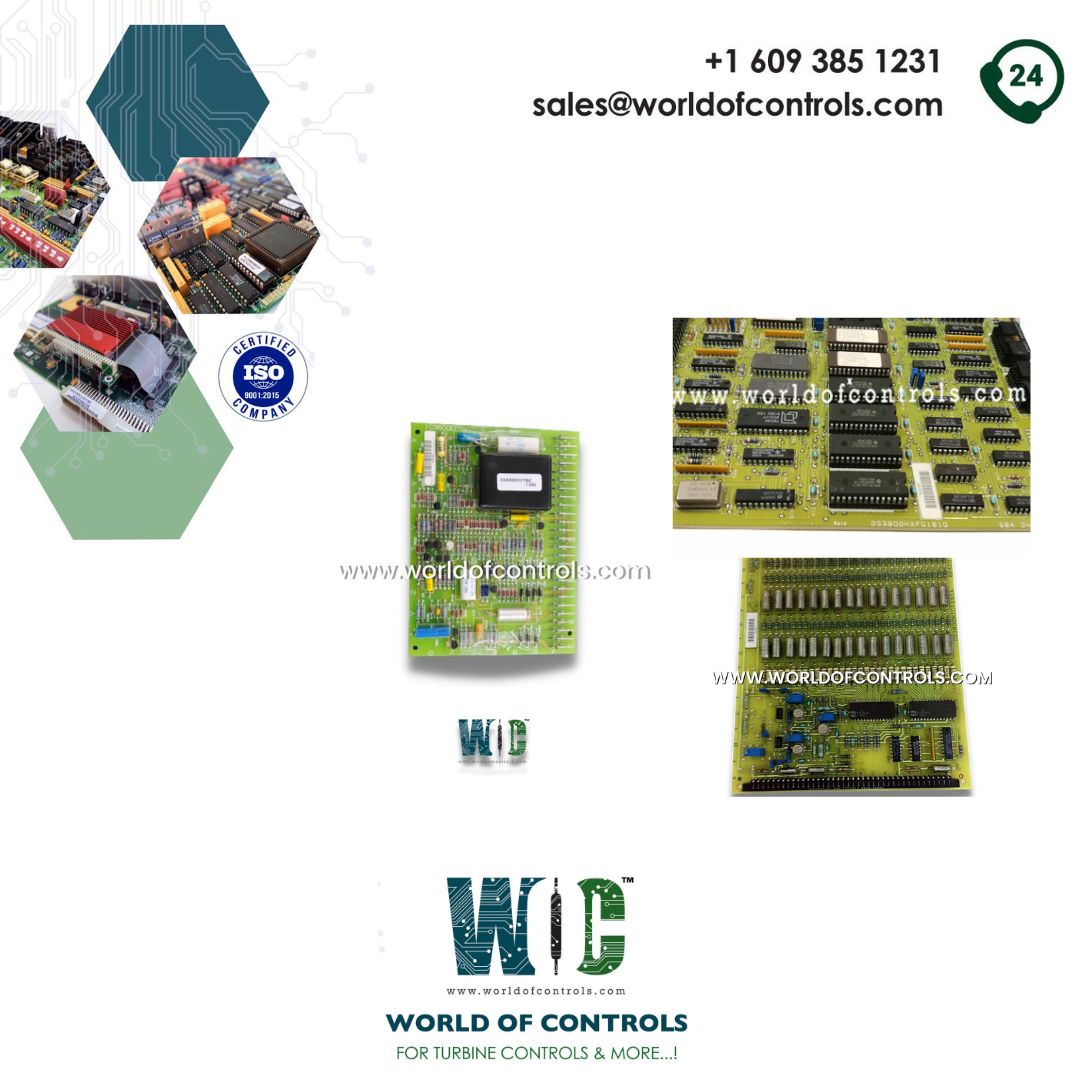Features of GE Speedtronic Mark IV turbine control spare parts
- In a landscape of ever-evolving technology, where obsolescence can often overshadow the longevity of equipment, the Mark IV series remains a steadfast and trusted choice. Its resilience, precision, and ability to consistently deliver optimal performance are qualities that have earned it a distinguished reputation in the field.
- If you find yourself in search of a reliable and field-tested product that's ready for immediate deployment, you need not look any further than our extensive inventory. WOC offers a comprehensive selection of replacement parts designed specifically for the GE Mark IV gas turbine control system. Each component in our inventory has undergone rigorous testing to ensure its reliability and compatibility with the GE Speedtronic Mark IV spare parts.
- Whether you are maintaining an existing Mark IV system or considering an upgrade, our inventory and commitment to quality ensure that your control system will continue to operate at its best, delivering the performance and dependability you expect. Choose our extensive inventory and experience peace of mind in knowing you have access to the highest standards of reliability and support for your GE Speedtronic Mark IV Gas Turbine Control System.
Hardware features
- While the hardware design successfully met historical requirements, it also recognized the importance of being adaptable to future customer needs. Understanding that technological advancements and customer preferences evolve, the design aimed to remain agile and ready to accommodate emerging requirements. This forward-thinking approach ensures that the Mark IV panel remains a relevant and valuable solution for years to come.
- Another objective was to make the panel repairable while a turbine is in operation. This entailed a meticulous arrangement of components, with a focus on accessibility and safety. The design prioritized ease of component replacement, even when the panel is energized and the turbine is running. This is particularly vital for minimizing downtime and ensuring the continuous operation of turbines, contributing to improved efficiency and productivity.
- To achieve repairability during operation, modules containing the most critical and active components, which are typically more prone to failure, were strategically located on the front doors of the panel. This placement ensures that these components can be readily accessed and replaced without the need for complex shutdown procedures or extensive system disassembly.
Software features
- The development of the Mark IV software posed several noteworthy challenges. Firstly, each gas turbine control installation is tailored to meet the unique preferences and requirements of the customer. Consequently, the software had to be designed with a high degree of modularity, making it easily adaptable, particularly in areas subject to frequent modifications, such as start-up and shut-down sequencing. Accomplishing this while still adhering to stringent reliability objectives presented yet another hurdle.
- Secondly, the fault-tolerant redundant processor architecture necessitated the creation of a meticulously crafted communication system capable of maintaining functionality even in the event of partial failures.
- At the heart of this software design lies a robust multi-tasking operating system. This operating system serves as the framework within which the specific software modules for each installation are incorporated and executed. It fulfills several vital functions:
- Initialization of both hardware and software data.
- Periodic scheduling of tasks.
- Execution of the highest-priority task.
- Management of interrupts.
- Provision of system service routines.
World of Controls has the most comprehensive collection of GE Speedtronic Mark IV replacement parts. Please contact WOC as soon as possible if you require any extra information.
Frequently Asked Questions
Why is the ability to repair the panel while the turbine is in operation important?
Reparability during operation is crucial for minimizing downtime and ensuring the continuous operation of turbines. This contributes to improved efficiency and productivity in industrial settings.
Explain how the hardware design prioritizes ease of GE Speedtronic Mark IV replacement part replacement?
The design places critical and active components, which are more prone to failure, on the front doors of the panel. This strategic placement ensures that these components can be accessed and replaced easily, even with the panel energized and the turbine running.
Is the hardware design of the panel adaptable to different turbine models and configurations?
Yes, the design is versatile and can be tailored to different turbine models and configurations. Its adaptability ensures that it can meet the specific needs of various industrial applications.
Why was modularity an essential consideration in the software design?
Modularity was crucial because each gas turbine control installation had to be customized to meet the unique preferences and requirements of individual customers. This modularity allowed for easy adaptation, particularly in areas of the software that were subject to frequent modifications.
What were the reliability objectives that the software needed to adhere to?
The software development had to meet stringent reliability objectives, ensuring that the gas turbine control system operated reliably and safely. Specific details about these objectives would depend on the project's specifications.
How did the fault-tolerant redundant processor architecture impact the software development?
The fault-tolerant redundant processor architecture added complexity to the software development process. It required the creation of a carefully designed communication system that could maintain functionality even in the presence of partial failures, enhancing system reliability.
